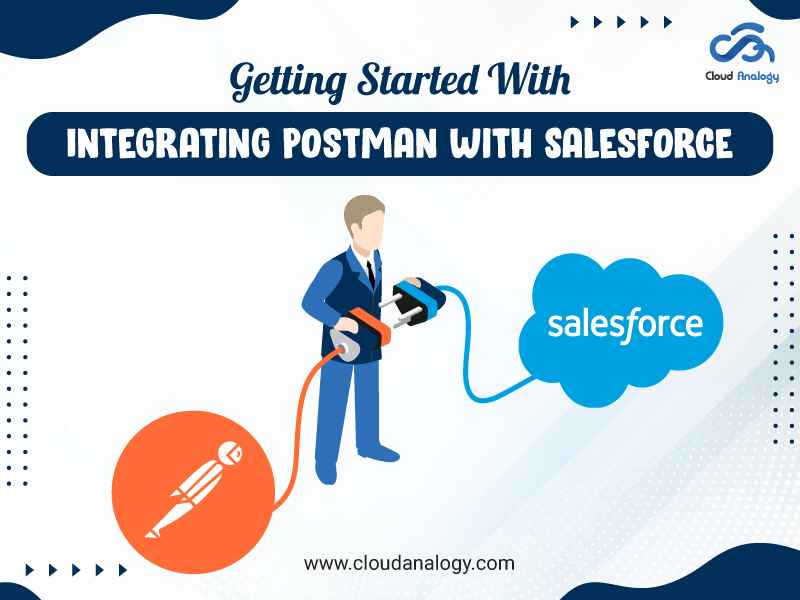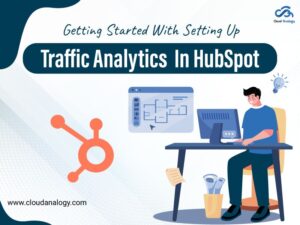Sharing is caring!
API testing is a crucial aspect of modern software development, ensuring that applications communicate effectively and function according to the project requirements.
Salesforce, a leading cloud-based CRM platform, offers a robust set of APIs for developers to interact with its features programmatically. But with a rich collection of APIs, testing them out on specific organizations or across multiple organizations can be daunting. This is where Postman comes into play.
In this blog post, we’ll explore how to integrate Postman, a popular API testing tool, with Salesforce. This will empower you to streamline your development workflow & ensure the application’s reliability.
Overview Of Salesforce Platform APIs
Salesforce Platform APIs provide developers with a way to access and manipulate Salesforce data and functionality programmatically. These APIs enable seamless integration between Salesforce and external systems, allowing developers to create custom solutions, automate business processes, and extend the capabilities of the Salesforce platform.
Salesforce offers a comprehensive suite of APIs that provide programmatic access to the data and functionality of the Salesforce platform. These APIs include:
- REST API: Helps you interact with Salesforce data using RESTful principles.
- SOAP API: Provides a standardized protocol for accessing data using XML-based messaging.
- Connect API: Enables seamless integration with external systems and services.
- User Interface API: Facilitates the creation of user interfaces for interacting with Salesforce data.
- Analytics API: Allows you to access and manipulate Salesforce Analytics data.
- Bulk API: Streamlines loading and processing large volumes of data.
- Metadata API: Provides access to metadata information about your Salesforce organization.
- Streaming API: Allows you to receive real-time notifications about changes to Salesforce data.
Overview Of Postman
Postman is a comprehensive API development and testing tool that streamlines API development, testing, and documentation using its intuitive interface, simplifying HTTP requests and API validation.
With features such as collections, environments, & scripts, Postman empowers developers to streamline their API workflows and collaborate more effectively.
Key Features Of Postman Include:
HTTP Request Building: Easily create and send HTTP requests, including REST and SOAP.
Graphical User Interface: Configure requests and view responses using a simple graphical interface.
JavaScript Automation: Write JavaScript code to automate tasks and add dynamic behavior to requests.
Team Workspaces: Collaborate with team members by sharing collections, environments, and test scripts.
Environment Variables: Define variables to streamline testing across different environments.
Desktop and Web Browser Support: Use Postman as a desktop application or directly within your web browser.
Steps To Integrate Postman With Salesforce
Step 1: First, log in to the org.
Step 2: From the setup, in the Quick Find Box, enter CORS (which stands for cross-origin resource sharing).
Step 3: Next, click on the new button.
Step 4: Enter https://*.postman.com in the original URL pattern. Then click Save.
Step 5: Again click new, then enter https://*.postman.co in the original URL pattern. Then click Save.
Step 6: Sign in or Sign up for a postman account.
Step 7: Click on workspace and create a new workspace. Give it a name and set visibility to personal.
Step 8: Now, head to the given link, and your page will look like this. https://www.postman.com/salesforce-developers/workspace/salesforce-developers/overview
Step 9: Click Collection and select Salesforce Platform APIs to expand it.
Step 10: Click on Fork to create a new fork, then choose the workspace you want.
Step 11: Now, open the playground you have created above.
Step 12: In Collection, click on the Authorization tab. Type should be OAuth2.0.
Step 13: Then click on Get new access token.
Step 14: Salesforce API collection page will appear, then click allow.
Step 15: An access token page will appear. Verify that the instance URL points to the trailhead playground.
Step 16: Copy the instance URL, Then click on the use token.
Step 17: Then click on the variable tab.
Step 18: Paste the copied URL in the current value section of the endpoint variable.
Step 19: Click on REST, then SObject, and then POST SObject Create.
Step 20: Go to Params; enter the account in value in the path variable. Then click Save.
Step 21: Now, go to the Body tab.
Step 22: Then copy and paste the code in the body section.
{
“Name”: “Blackbeard’s Coconut Milk Emporium,”
“Description”: “The finest coconut milk in the seven seas”
}
Step 23: Click Save and Send.
Step 25: Go to the playground, then click on accounts. You will see that the account has been created.
Conclusion
In conclusion, the steps outlined above demonstrate how to connect Postman to your Salesforce org seamlessly. Postman serves as a versatile API development environment, facilitating tasks such as testing APIs and creating and running automated tests with ease.
Moreover, leveraging Postman collections enables the bundling of 200+ requests across various Salesforce platform APIs, streamlining testing and development processes. Configurable Postman environments and variables simplify authentication and enable effortless testing across multiple Salesforce orgs.
Integrating Postman with Salesforce for API testing offers developers a powerful toolkit for seamlessly building, testing, and debugging APIs. By leveraging Postman’s rich features and Salesforce Platform APIs’ versatility, developers can accelerate the development lifecycle, improve code quality, and deliver superior applications.
Looking for expert guidance to navigate your Salesforce journey? Cloud Analogy, a leading Salesforce Consulting Company, offers invaluable business advice tailored to your business needs. Connect with one of the world’s best Salesforce consulting companies and kickstart your project today!

Sachin Arora
Scrum Master and Principal Solutions Architect
Sachin, a renowned Scrum Master and Principal Solutions Architect at Cloud Analogy, has rich experience when it comes to working on process improvement in a fast-paced environment maintaining high level of quality in all deliverables. Sachin's expertise lies in varied hardware and software environments including Cloud technologies such as Salesforce, AWS, Cloud Foundry & Google App Engine and Mobile.Hire the best Salesforce Development Company. Choose certified Salesforce Developers from Cloud Analogy now.







